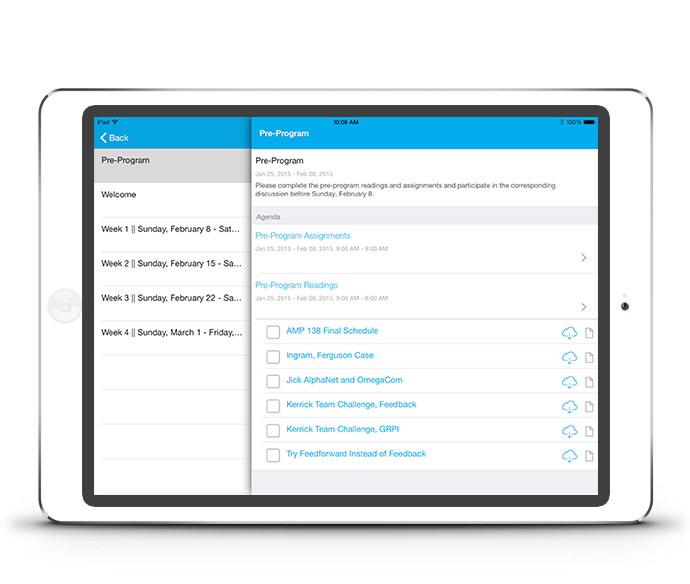
Going paperless is hard for traditional learning organizations. We should know: between developing Stekio from a back-of-the-napkin idea into a collaborative learning solution, we naturally wanted to find out about the challenges that business education and corporate training programs were actually facing. We ended up talking to the business program heads at MIT, Harvard, Brown and elsewhere – and a big part of the challenge they were all facing looked (and weighed) the same wherever we went: a 400-page, 20-pound executive education binder that included all of the critical information that no one ever actually reads from cover to cover.
“Every semester, we’re printing out these giant omnibus binders and giving them out to students (who can barely carry them, much less fit them into an already- stuffed backpack) because it’s just the way we’ve always done it,” said one school administrator. “It’s tedious – and kind of pointless, since everyone brings their own device to school for learning. They could be viewing these things on their iPads, which most of them have anyway. Actually, our school even gives iPads out! We should have gone paperless years ago – but we haven’t.”
It sounds like there’s a simple solution, but there’s a legal catch. “For reasons of intellectual property, we can’t just send out a PDF and be done with it. A document that’s instantly shareable is also just giving away IP that we’ve spent months and years developing.”
Of course, keeping course materials on paper isn’t exactly rock-solid protection for their proprietary materials: the first photocopier came out in 1959 and easy-to- use scanners have been around for about two decades. Intellectually, the directors of these business programs know this; they also know that weighing down the dynamic business leaders of the future with these materials isn’t particularly efficient.
The worst part is that all this paper costs a lot of money. Sure, paper seems cheap, at pennies per page. But then there’s the cost of actually printing the materials, storing them in space that could otherwise be leased or rented, accounting for them, distributing them and more… We’re not just talking about a few dollars anymore. When we add up all of the costs, business education programs are literally spending hundreds of thousands of dollars, per year. As universities, colleges and private training programs try to keep tuition more affordable and big costs like salaries keep rising inexorably, switching to paperless is not just a nice option – it’s a necessity.
This is where Stekio can help. Executive education course administrators can upload their documentation to the Stekio app. On an iPad, it’s much easier for students to search and scan through these materials, making it more likely they’ll actually use them – and after all, isn’t giving students access really the point? Also, accessing the documentation through Stekio rather than through a PDF is one more safeguard to the school’s intellectual property. There’s no perfect solution for that, but one more hurdle just mitigates the risk of losing valuable IP.
“In the end, Stekio gives us a technology solution for our business problem,” the program administrator says. “The biggest hurdle for us is just changing our mindset – and we’re glad to say that your solution has already helped us get past that. Once we started seeing how we could use it, we knew our students, teachers and administrators would want it. Having it on the iPad sure is better than dealing with all that printing – and lugging those giant binders around.”
Learn how Stekio can help your business education program go paperless today.






